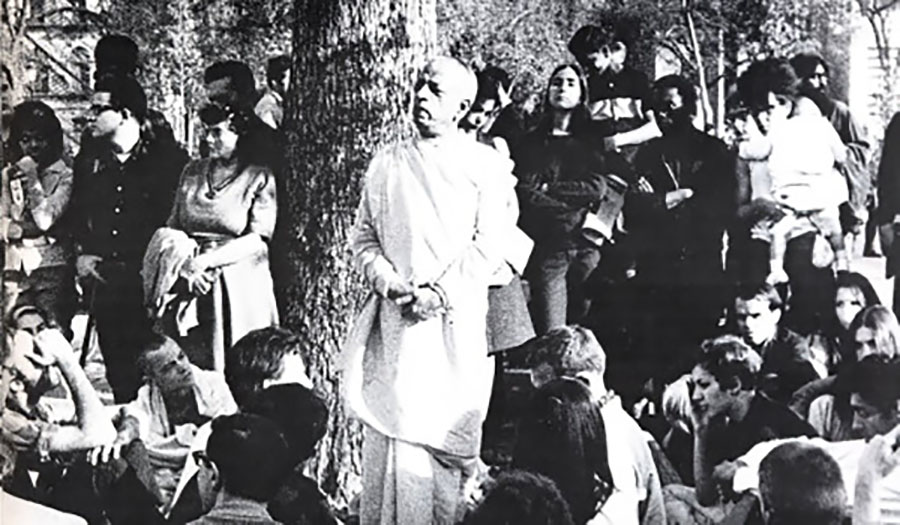ISKCON 50 Meditations: April 9, 2016
By Satsvarupa dasa Goswami | Апр 09, 2016

The Bowery Loft
94 Bowery was a narrow, four-storey building. It had long ago been painted grey and bore the usual facing of a massive, black fire escape. A well-worn black double door, its glass panels reinforced with chicken wire, opened on to the street. The sign above the door read: “A.I.R. 3rd and 4th”, indicating that artists in residence occupied those floors. Harvey Cohen’s loft on the top floor of 94 Bowery was an open space, almost 100 feet long (from west to east) and twenty-five feet wide. It received a good amount of sunlight on the east, the Bowery side, and it also had windows at the west end, as well as a skylight. The exposed rafters of the ceiling were twelve feet above the floor.
Harvey Cohen had used the loft as an art studio and racks for paintings still lined the walls. A kitchen and shower were partitioned off in the northwest corner and a room divider stood about fifteen feet in the Bowery side windows. This divider did not run from wall to wall, but was open at both ends and was several feet short of the ceiling.
It was behind this partition that Prabhupada had his personal living area. A bed and a few chairs stood near the window and Prabhupada’s typewriter sat on his metal trunk next to a small table that held his stacks of Бхагаватам manuscripts. His dhotis hung drying on a clothesline.
On the other side of the partition was a dais, about ten feet wide and five feet deep, on which Prabhupada sat during his kirtanas and lectures. The dais faced west toward the loft’s large open space – open, that is, except for a couple of rugs and an old-fashioned, solid wood table, and, on an easel, Harvey’s painting of Lord Caitanya dancing with His associates.















